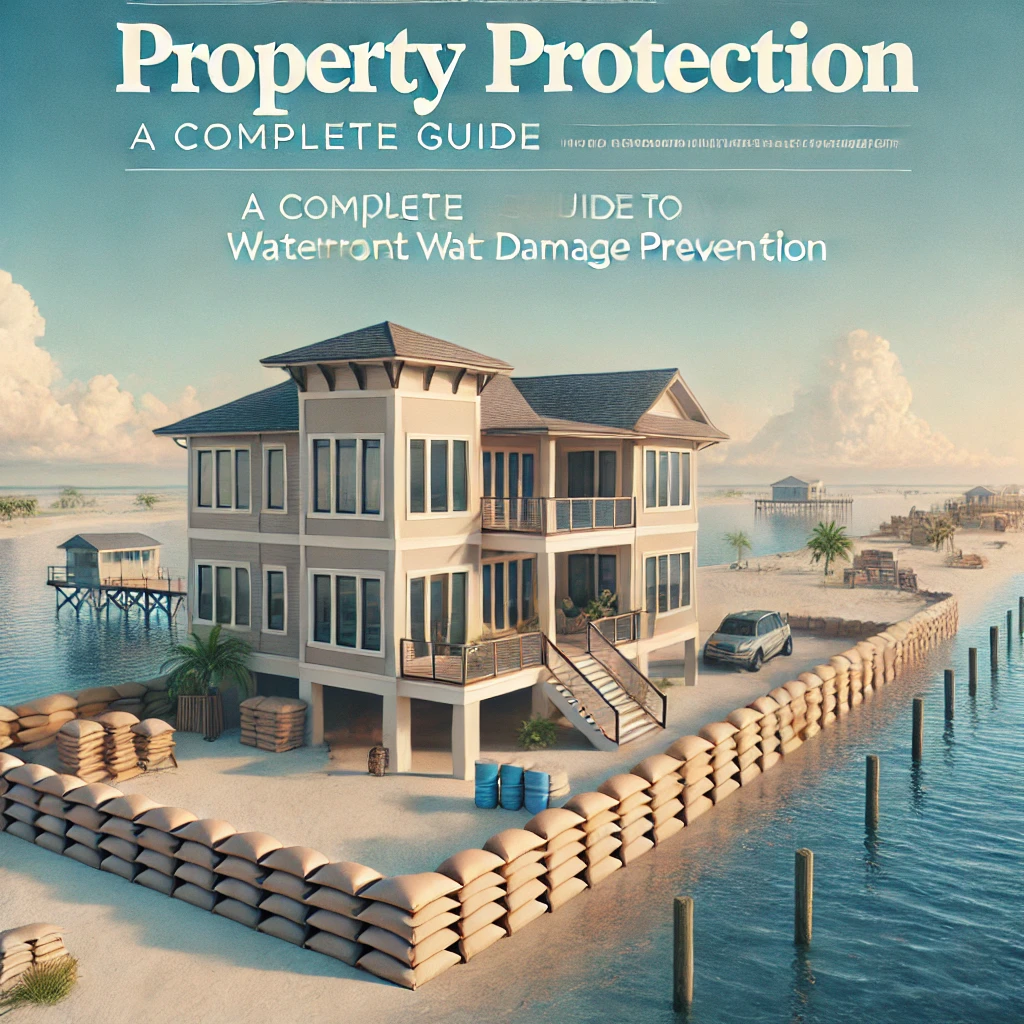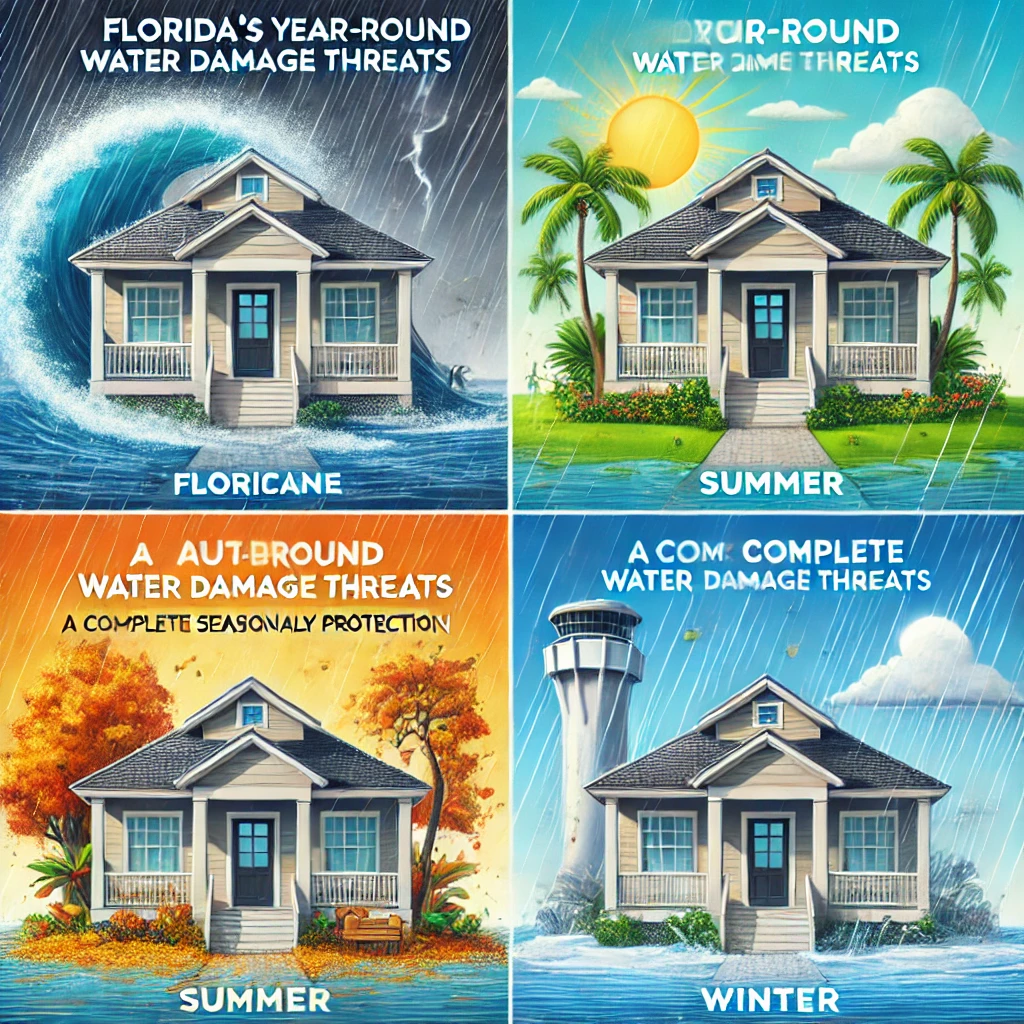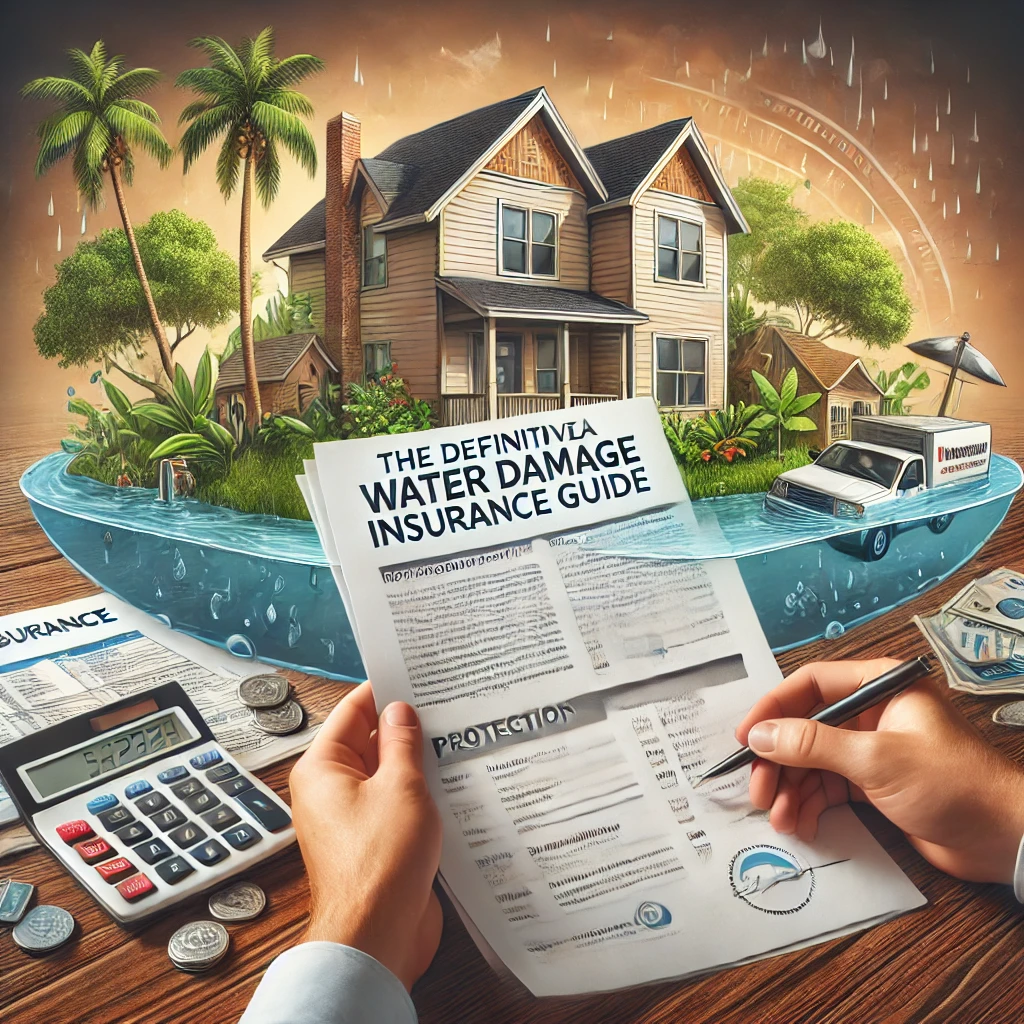The Complete Florida Hurricane Water Damage Guide: Region-Specific Prevention, Response & Restoration

As the peninsula between the warm waters of the Gulf of Mexico and the Atlantic Ocean, Florida faces unique challenges when it comes to hurricane water damage. Our state's diverse geography, from the Panhandle's shallow Gulf waters to the Keys' vulnerable island chain, creates distinct risks and demands specialized approaches to water damage prevention and restoration. With over 1,350 miles of coastline and millions of residents in both coastal and inland areas, understanding Florida's specific hurricane water damage patterns is crucial for property protection and disaster response.
Understanding Florida's Unique Hurricane Vulnerability Landscape
The impact of hurricanes varies dramatically across Florida's distinct regions. Miami-Dade and Broward counties face intense Atlantic hurricanes, while the Tampa Bay area deals with different storm surge patterns from the Gulf of Mexico. Central Florida, though inland, experiences significant flooding from hurricane rain bands, particularly in areas like Orlando and Kissimmee where lake systems can overflow. The Florida Panhandle's shallow Gulf waters create their own unique storm surge patterns, affecting cities from Pensacola to Panama City differently than their southern counterparts.
Florida's Regional Hurricane Water Damage Challenges
South Florida's Atlantic Coast Defense Strategy
Miami-Dade, Broward, and Palm Beach counties face the highest risk of direct Atlantic hurricane strikes in Florida. Miami's high-rise buildings require specialized water damage prevention systems, dealing with wind-driven rain at elevations exceeding 500 feet. Fort Lauderdale's extensive canal system can exacerbate flooding, requiring unique preparation strategies for properties along these waterways. In Boca Raton, the Intracoastal Waterway poses additional challenges, as storm surge can force water inland through numerous access points.
Florida's Gulf Coast Water Damage Considerations
The Tampa Bay area represents one of Florida's most vulnerable regions for storm surge, despite its relatively fortunate hurricane history. The shallow waters of Tampa Bay can amplify surge effects, potentially pushing water into downtown St. Petersburg and low-lying areas of Clearwater. Naples and Fort Myers face different challenges, with their proximity to the Everglades creating complex drainage issues during major storms.
Central Florida's Inland Hurricane Protection Needs
While Orlando sits inland, its location doesn't guarantee protection from hurricane water damage. The city's numerous lakes and high water table create unique flooding risks during hurricane events. Winter Park and Winter Garden face challenges with their chain of lakes, while Kissimmee's proximity to Lake Tohopekaliga requires specialized flood prevention strategies. The I-4 corridor, from Daytona Beach through Orlando to Tampa, can experience significant flooding even from weakened hurricane systems.
Florida's Metropolitan Areas: Unique Water Damage Challenges and Solutions
Miami-Dade's Coastal Defense Complex
The Miami metropolitan area presents some of Florida's most complex water damage scenarios. In downtown Miami, the combination of Biscayne Bay's storm surge potential and the Miami River's flood risks creates dual threats during hurricane events. Coral Gables residents face unique challenges with extensive tree canopy damage leading to secondary water intrusion, while Coconut Grove's bayfront location makes it particularly vulnerable to storm surge flooding through numerous canals and waterways. In Miami Beach, the increasing frequency of king tides compounds hurricane flooding risks, requiring specialized preventive measures for oceanfront and bayside properties alike.
The Tampa Bay Region's Water Damage Vulnerability
Tampa Bay's unique geography makes it particularly susceptible to hurricane water damage. South Tampa's Bayshore Boulevard area, despite its beauty, faces severe storm surge risks, with historical flooding reaching several blocks inland. St. Petersburg's Coffee Pot Bayou neighborhood requires specialized flood prevention strategies, while Clearwater Beach's barrier island location demands comprehensive evacuation and property protection plans. The channelized nature of Old Tampa Bay can funnel storm surge directly into neighborhoods from Safety Harbor to Oldsmar, requiring unique mitigation strategies.
Central Florida's Inland Water Challenges
Orlando's extensive network of lakes creates distinct flood zones throughout the metropolitan area. The Winter Park Chain of Lakes, including Lakes Virginia, Mizell, and Osceola, can overflow during heavy hurricane rains, affecting historic lakefront properties. The Doctor Phillips area, with its numerous Butler Chain of Lakes properties, faces similar challenges during major storm events. In Kissimmee, neighborhoods along Lake Tohopekaliga require specialized flood prevention measures, particularly in the historic downtown district and lakefront communities.
Jacksonville's St. Johns River Complex
Jacksonville's position along the St. Johns River creates unique hurricane water damage risks. The San Marco neighborhood, known for its historic charm, faces compound flooding from river overflow and storm surge. The Jacksonville Beaches communities, including Neptune Beach and Atlantic Beach, must contend with both oceanic storm surge and inland water flow. Riverside and Avondale's historic districts require specialized water damage prevention strategies due to their aging infrastructure and proximity to the river's widest points.
The Florida Panhandle's Coastal Challenges
Pensacola's location on Pensacola Bay makes it vulnerable to storm surge, particularly in the historic Pensacola Beach and Gulf Breeze areas. Panama City's St. Andrews Bay area learned crucial lessons from Hurricane Michael, leading to enhanced water damage prevention strategies throughout the region. Destin's unique position between the Gulf and Choctawhatchee Bay requires comprehensive water damage prevention plans for both waterfront areas.
Florida's Specialized Commercial Districts and Their Water Damage Needs
The International Drive corridor in Orlando faces unique challenges with its high concentration of hotels and tourist attractions. Water damage prevention in this area must account for large-scale commercial properties and high-occupancy buildings. Fort Lauderdale's Las Olas Boulevard district combines luxury retail with waterfront exposure, requiring sophisticated water damage prevention systems. Naples' Fifth Avenue South business district must balance historic preservation with modern flood protection methods.
Florida's Historic Districts: Preserving the Past Against Water Damage
St. Augustine's historic district, as America's oldest city, requires specialized approaches to water damage prevention that preserve historical integrity while providing adequate protection. Key West's Old Town faces similar challenges, with the added complexity of island vulnerability. Fernandina Beach's Victorian-era buildings on Amelia Island demand careful consideration of both preservation and protection needs.
Florida's Barrier Island Communities and Water Damage Risk Management
The barrier islands along Florida's coast each face unique challenges. Longboat Key's narrow geography requires specialized evacuation and property protection plans. Sanibel Island's position in the Gulf makes it particularly vulnerable to storm surge, as demonstrated by recent hurricane impacts. The Space Coast's barrier islands, from Cocoa Beach to Melbourne Beach, must contend with both Atlantic storms and Indian River Lagoon flooding.
These regional variations demonstrate why local expertise is crucial for effective water damage prevention and response in Florida. Each area's unique combination of geography, infrastructure, and climate creates distinct challenges that require specialized solutions and deep local knowledge.
The Florida-Specific Building Code Impact on Water Damage
Florida's building codes, especially post-Hurricane Andrew, represent some of the strictest in the nation regarding water damage prevention. Miami-Dade County's enhanced requirements have become a model for coastal construction throughout the state. These regulations affect everything from roof design to window installation, with specific requirements varying between coastal and inland regions. Property owners in Palm Beach need different preparations than those in Orlando, while Panama City's codes reflect lessons learned from Hurricane Michael's devastating impact.
Florida's Water Damage Insurance Landscape
Florida's water damage insurance requirements and recommendations vary significantly by region. Coastal properties in Jacksonville face different coverage requirements than those in Tampa, while flood insurance needs in Orlando differ from those in Miami. Understanding these regional variations is crucial for proper protection and efficient claims processing after hurricane damage occurs.
Florida's Emergency Response Network for Water Damage
Each Florida county maintains its own emergency management division, coordinating with state-level resources during hurricane events. Miami-Dade's Emergency Operations Center operates differently than Hillsborough County's, while Orange County's inland location requires unique response protocols. Understanding your local emergency management system proves crucial for rapid response to water damage situations.
Regional Response Timing in Florida's Various Climate Zones
Response timing varies significantly across Florida's regions. South Florida's tropical climate can accelerate mold growth after water damage, requiring faster response times than the Panhandle's slightly milder environment. Tampa Bay's humidity levels demand specific drying protocols, while the Keys' isolated location requires specialized emergency response planning.
Water Damage Technology Adaptations for Florida's Climate
Modern water damage restoration in Florida employs region-specific technology and techniques. Miami's high-rise buildings require different drying equipment than single-story homes in Orlando. The salt air in coastal regions from Jacksonville to Key West affects equipment choice and maintenance protocols, while inland areas focus more on handling high-volume water extraction from tropical rainfall.
Florida's hurricane water damage challenges require local expertise and understanding of regional variations. From the unique risks facing Miami's high-rises to the specialized needs of Orlando's lake-dotted landscape, effective water damage prevention and response demands a thorough knowledge of local conditions and requirements. As Florida continues to grow and develop, staying informed about your specific region's water damage risks and prevention strategies becomes increasingly crucial for property protection.
Don't wait until a hurricane is approaching to protect your Florida property from water damage. Contact our local specialists today for a region-specific assessment of your property's needs. Our teams across Florida understand your area's unique challenges and can provide targeted solutions for your specific location. Call us now to schedule a comprehensive evaluation and ensure your property is prepared for Florida's next hurricane season.
Disclaimer: This comprehensive guide provides general information. Always consult local experts for specific property assessments.
We provide water damage restoration across the state of Florida:
- Newberry
- Palmetto
- Ponte Vedra
- River Ranch
- Saint Augustine
- Sebastian
- Vanderbilt Beach
- Venus
- Wimauma
- Sarasota
- Pensacola
- Bradenton
- St. Petersburg
- Port Charlotte
- Key West
If you need immediate water damage restoration in Florida, call our experts! (754) 287-1616





